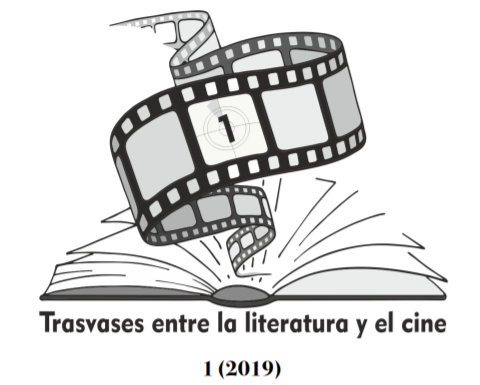Colloquiality in the cinematographic adaptation of the theatrical text: a proposal of interdisciplinary study with the example of Bajarse al moro
DOI:
https://doi.org/10.24310/Trasvasestlc.v1i0.6562Keywords:
film adaptation, theater, colloquiality, lexical measures, syntactic measures, vernacular, Alonso de Santos, Bajarse al moroAbstract
Literary works adaptations to cinema are frequent. The most direct is perhaps from theatrical play to film, but even in that case, multiple changes are necessary. Among them, the need to adapt the language of the characters, especially through the "naturalization" of said language, has been highlighted by critics, be that by means of spontaneity, credibility, or simplification. For all these characteristics, the use of a colloquial register is essential. In this study, taking as an example Bajarse al Moro by J. L. Alonso de Santos, we proposeanobjective and quantitative method for comparing colloquiality in the theatrical and the film version. In order to do so, we selected six theatrical scenes and their corresponding film scenes according to seventeen syntactic and lexical features related to colloquiality.Downloads
Metrics
Publication Facts
Reviewer profiles N/A
Author statements
Indexed in
-
—
- Academic society
- N/A
- Publisher
- Universidad de Málaga
References
ALONSO DE SANTOS, José Luis (1999), La escritura dramática, Madrid, Castalia.
BEINHAUER, Werner (1991), El español coloquial, Madrid, Gredos.
BRIZ, Antonio (1996), El español coloquial: situación y uso, Madrid,
Arco/Libros.
BRIZ, Antonio (1997), «Coherencia y cohesión en la conversación
coloquial», en M. Iglesias (coord.), Gramma-temas. 2, Universidad de
León, págs. 9-44.
BRIZ, Antonio (1998), El español coloquial en la conversación: esbozo de pragmagramática, Barcelona, Ariel.
BRUMME, Jenny (2008), «Traducir la oralidad teatral. Las traducciones al castellano, catalán, francés y euskera de Der Kontrabass de Patrick
Süskind», en J. Brumme (ed.), La oralidad fingida: descripción y traducción. Teatro, cómic y medios audiovisuales, Madrid/Frankfurt am
Main, Iberoamericana/Vervuert Verlag, págs. 21-64.
CHAUME, Frederic (2003), Dotblage i subtitulació per a la TV, Vic, Eumo.
CHECA GARCÍA, Irene (2005), Índices de madurez sintáctica en adolescentes almerienses, Universidad de Almería.
COLOMO, Fernando (2013), Coloquio sobre Bajarse al moro. Versión española (TVE) [En línea:
http://www.rtve.es/alacarta/videos/versionespanola/
version-espanola-bajarse-moro/1665283/]
EVANS, N., & WATANABE, H. (Eds.) (2016). Insubordination.
Amsterdam/N.Y: John Benjamins Publishing Company.
HERNANDO CUADRADO, Luis Alberto (2001), «El registro coloquial en Bajarse al moro, de J. L. Alonso de Santos», Cuadernos para investigación de la literatura hispánica, 26, págs. 145-154.
HERRERO MORENO, Gemma (1996), «La importancia del concepto de enunciado en la investigación del español coloquial: a propósito de
enunciados suspendidos», en A. Briz et al. (eds.), Pragmática y gramática del español hablado. Actas del II Simposio sobre análisis del discurso oral, Zaragoza, Libros Pórtico, págs. 109-126.
HIDALGO NAVARRO, Antonio (1996-1997), «Sobre los mecanismos de impersonalización en la conversación coloquial: el tú impersonal»,
E.L.U.A., 11, págs. 163-176 [En línea:
http://rua.ua.es/dspace/handle/10045/6353].
HUNT, Kellogg W. (1964), Differences in grammatical structures written at three grade levels, the structures to be analyzed by transformational methods, Tallahassee, Florida State University.
LAKOFF, George y Mark JOHNSON, (1980), Metaphors we live by, Chicago, University of Chicago Press.
MALPARTIDA TIRADO, Rafael (2006), «Del diálogo dramático al diálogo fílmico: una propuesta de estudio», en Analecta Malacitana, XXIX/1, págs. 197-214.
MCKEE, Robert (2018), El diálogo. El arte de hablar en la página, la escena y la pantalla, Barcelona, Alba.
NARBONA, Antonio (1989), Sintaxis española: nuevos y viejos enfoques, Barcelona, Ariel.
NARBONA, Antonio (2001), «Diálogo literario y escritura(lidad)-oralidad»,en R. Eberenz (ed.), Diálogo y oralidad en la narrativa hispánica moderna. Perspectivas literarias y lingüísticas, Madrid, Verbum, págs. 189-208.
PÉREZ BOWIE, José Antonio (2008), Leer el cine. La teoría literaria en la teoría cinematográfica, Universidad de Salamanca.
PÉREZ MARTÍNEZ, Ana María (2004), «Dimensión textual del cine y el
teatro: puntos de encuentro», en J. D. Vera Méndez y A. Sánchez
Jordán (eds.), Cine y literatura: el teatro en el cine, Universidad de Murcia, págs. 23-30.
RODRÍGUEZ, Bonifacio (1997), «Argot y lenguaje coloquial», en A. Briz et al. (eds.), Pragmática y gramática del español hablado. Actas del II Simposio sobre análisis del discurso oral, Zaragoza, Libros Pórtico, págs. 225-239.
SANTAMARÍA PÉREZ, Isabel (2001), El argot y las jergas, Madrid, Liceus.
SECO, Manuel (1973), «La lengua coloquial: Entre visillos, de Carmen
Martín Gaite», en AA. VV., El comentario de textos, Madrid, Castalia,
págs. 361-379.
SECO, Manuel (1983), Ortografía, reglas y comentarios, Universidad de Sofía.
TAMAYO, Fermín y Eugenia POPEANGA (2019), «Introducción» a J. L.
Alonso de Santos, Bajarse al moro, Madrid, Cátedra.
TRACY-VENTURA, Nicole (2017), «Combining corpora and experimental data to investigate language learning during residence abroad: A study of lexical sophistication», System, 71, págs. 35-45.
TRUDGILL, Peter (2000), Sociolinguistics. An introduction to language andsociety, London, Penguin.
VÉLIZ, Mónica (1999), «Complejidad sintáctica y modo del discurso»,
Estudios filológicos, 34, págs. 181-192.
WARDHAUGH, Ronald y Janet M. FULLER (2014), An Introduction to
Sociolinguistics, Hoboken, Wiley-Blackwell.
WOLF, Sergio (2001), Cine/literatura. Ritos de pasaje, Buenos Aires, Paidós.
WILCOXON, Frank (1945), «Individual Comparisons by Ranking
Methods», Biometrics, 1, págs. 80-83..
Downloads
Published
How to Cite
Issue
Section
License
All authors published in this journal accept the following copyright terms:
a. Authors retain their authors´ rights (copyright) and grant First Publication Rights to the journal, which whill be published under a the Creative Commons Attribution-NonCommercial-ShareAlike 4.0 International (CC BY-NC-SA 4.0) license. All about this license is available in the following link: <http://creativecommons.org/licenses/by-nc-sa/4.0>
b. Authors may separately establish additional agreements for the non-exclusive distribution of the version of the work published in the journal (e.g. including it in an institutional repository, or publishing it in a book) with an acknowledgement of its initial publication in this journal.
c. Authors are allowed and encouraged to disseminate their work electronically (e.g. in institutional repositories or on their own website) as this can lead to productive exchanges, as well as earlier and more extensive citation of published work.
The author is responsible for obtaining permission from the copyright holder when using copyrighted materials.
This electronic journal is published by University of Málaga (UmaEditorial), thus it is necessary to cite the origin of any partial or total reproduction.








22.png)










